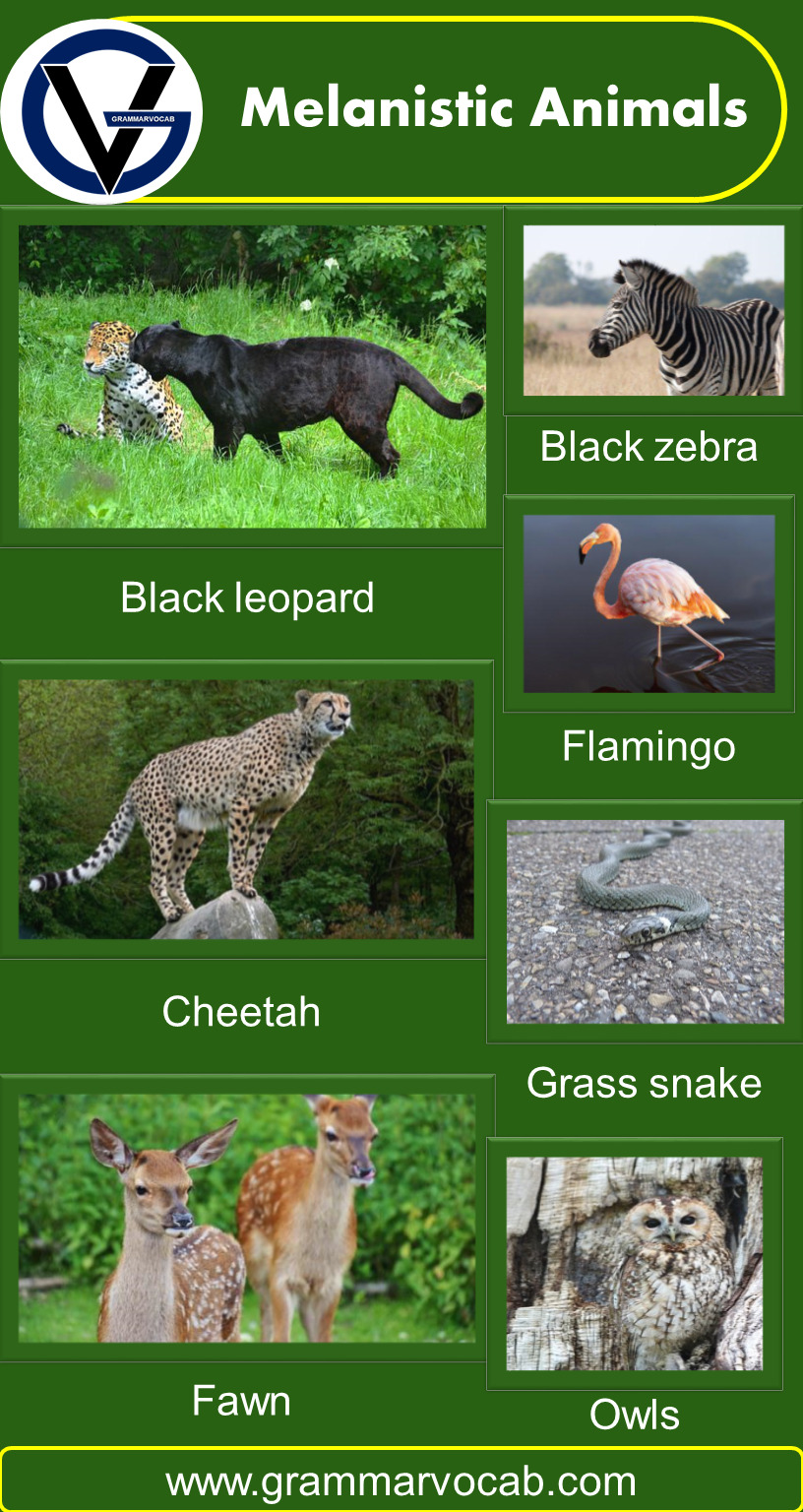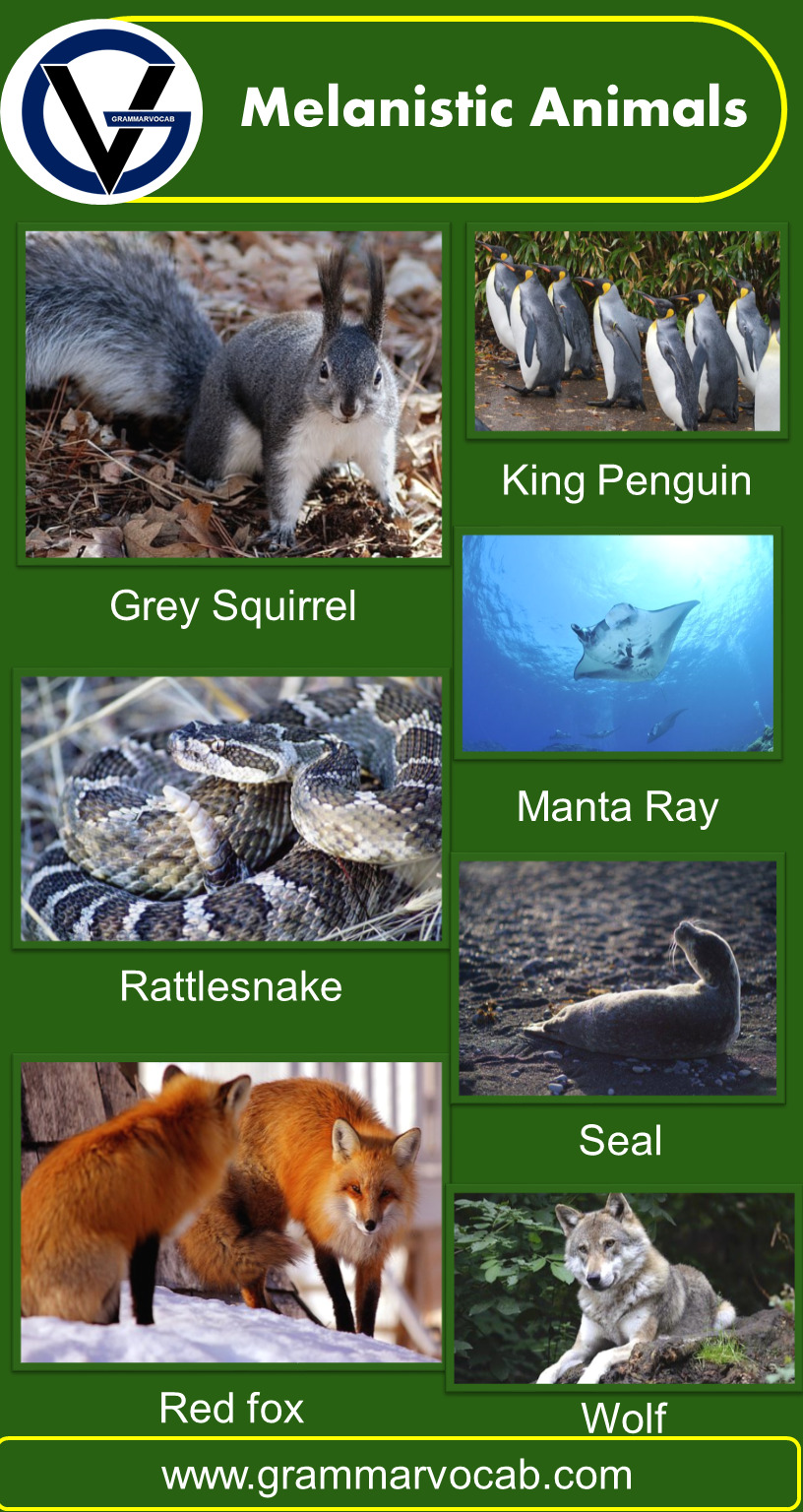Melanism is a genetic mutation that results in an excess of melanin, causing some animals to have black or dark-colored skin, fur, or feathers. Although melanism is relatively rare, it can occur in many different species, from birds and mammals to reptiles and insects. The unique appearance of melanistic animals has fascinated people for centuries, and many of these creatures have become symbols of power, mystery, and beauty in various cultures. If you’re curious about melanistic animals and want to learn more about them, you’ve come to the right place. In this blog post, we’ve compiled a list of melanistic animals from around the world, complete with pictures and a downloadable PDF for your convenience.
Download Melanistic Species Name with Pictures PDF
Melanistic Animals Names List
- Black Moor Goldfish
- Coral Snake
- Flamingo
- Manta Ray
- Cheetah
- Black leopard
- Gray Wolf
- Italian Crested Newt
- Deer
- Owls
- Wolf
- Grass snake
- Caiman
- Aesculapian Snake
- King Penguin
- Rattlesnake
- Rabbit
- Guinea Pig
- Black jaguar
- Gray Squirrel
- Parrot
- Giraffe
- Peppered Moth
- Pheasant
- Rooster
- Seal
- Serval Cat
- Eastern Blue Tongue Lizard
- Zebra
- Porcupine
- Ural Owl
- European Adder
- Gecko
- Black zebra
- Red Fox
- Leopard
- Rat Snake
- Grey Squirrel
- Turtle
- Fawn
- Barn Owl
- Chipmunk
- Blue Poison Dart Frog
- Jaguar
- Raccoon
Must Learn: Endangered Animals Names
List Of Melanistic Species | Image


FAQ Related to Melanistic Animals
Can any animal be melanistic?
Yes, melanism can occur in various animal species.
Can fish be melanistic?
Yes, fish can exhibit melanism. Melanistic fish have an increased production of melanin pigment, resulting in darkened skin or scales. This genetic trait can occur in various fish species, including both freshwater and saltwater fish. Examples of melanistic fish include black tetras, black ghost knifefish, and black molly fish.
Are humans melanistic?
No, humans cannot exhibit melanism. While humans have a wide range of skin tones due to varying amounts of the pigment melanin, true melanism, characterized by an overall darkening of the skin, does not occur in humans. The human skin color is determined by complex genetic factors and is primarily influenced by the balance of different types of melanin (eumelanin and pheomelanin) as well as other genetic and environmental factors.
Are black leopards melanistic?
Yes, black leopards are melanistic individuals characterized by increased production of dark pigment, melanin, in their skin and fur.
What is the opposite of melanistic?
The opposite of melanistic is albinistic.
What is melanistic color?
Melanistic color refers to a dark or black coloration resulting from increased production of melanin, a pigment responsible for the coloration of skin, fur, or feathers in animals. Melanistic individuals have a higher concentration of melanin, causing their appearance to be darker than non-melanistic individuals of the same species.
Is melanistic rare?
Yes, melanism is generally considered rare in animal populations.



